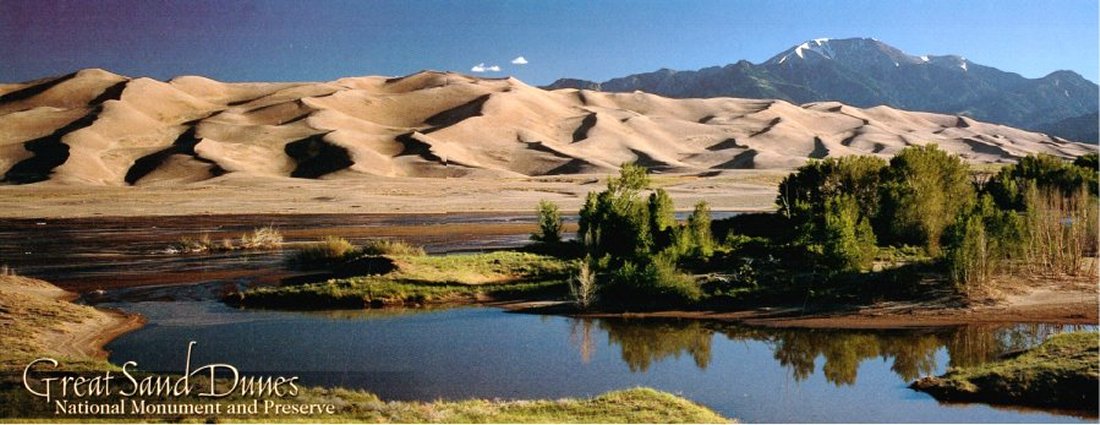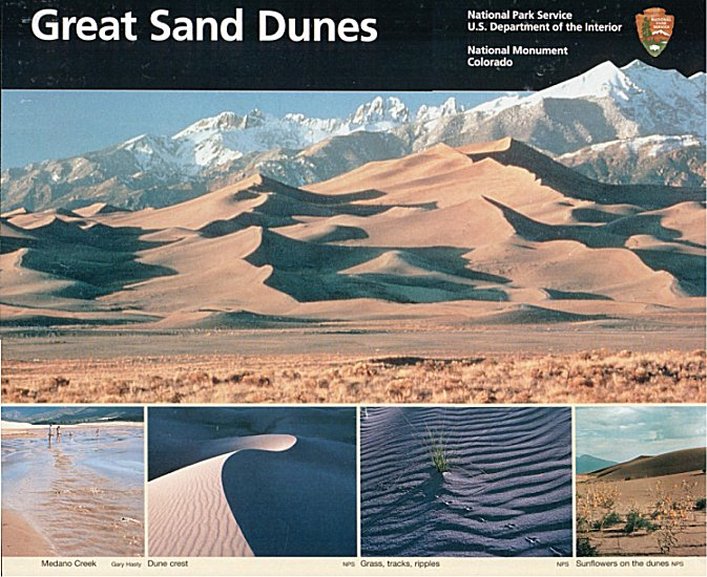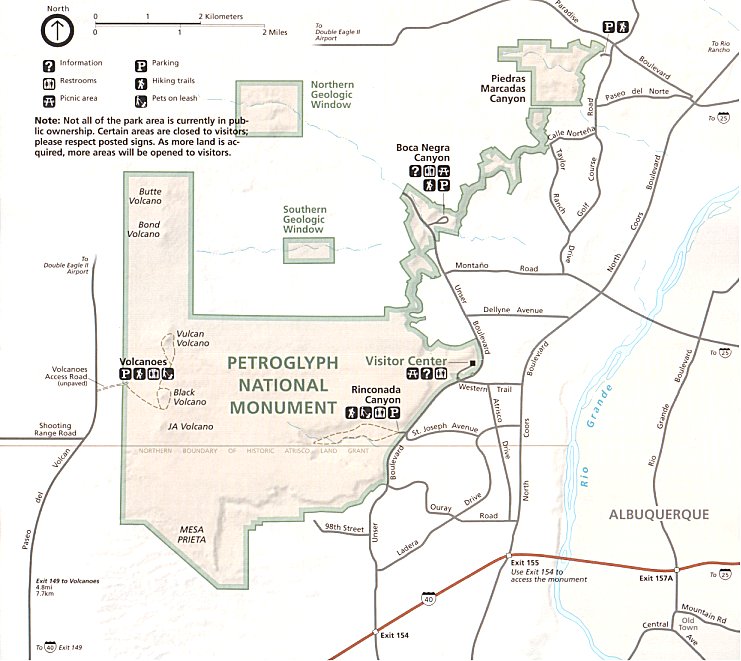The Great Sand Dunes
September 2004
 |
 |
![]()
 |
 |
![]()
The tallest sand dunes in North America, rise in a corner of the high altitude San Luis Valley in the Colorado Rockies. These dunes have built to highs of 750 feet from billions of grains of sand blown across the valley be wind. The dunes cover about 30 square miles. Medano and Sand creeks, flowing out of the mountains, provide a further barrier to movement of the dunefield by carrying huge quantities of sand back to the valley floor, where it is eventually recycled back into the dunes by the wind. Mountain lions, elk, deer, and black bears also have been seen in the dunes.
![]()
To view any picture on a larger scale just click on it.
Then click your browsers back button to return.
 Petroglyph National Monument Albuquerque, New Mexico. |
 We took the boca Negra Canyon trail. |
![]()
We follow the Rio Grande River from it's beginning around the great Sand Dunes in Colorado to Petroglyph National Monument in Albuquerque, New Mexico. Long ago people discovered that chipping away the rocks thin desert varnish revealed a lighter gray beneath and left a lasting mark. American Indians believe these images are as old as time. Archeologists estimate that most of the images were made 400 to 700 years ago by the ancestors of today's native people. Some images may be 2,000 to 3,000 years old. Beginning in the 1600's Hispanic heirs of the Atrisco land grant carved crosses and sheep brands into the rocks. Other explorers in the 1800's chiseled their names and dates into the boulders. Why were these images created? What do they mean? These questions may be answered by clues in the subject matter, carving technique, or setting. It took a long time to create each image with stone tools, so subject and setting for each petroglyph were carefully planned. Images of birds native to Central America indicate that the Native people were involved in an extensive cultural network. Do spirals represent a calendar, the cycles of life, or perhaps a desert millipede? Human like faces look out in two directions from the corners of boulders. Are they guarding a sacred location? Only the carvers know the petroglyphs' true meanings.
![]()